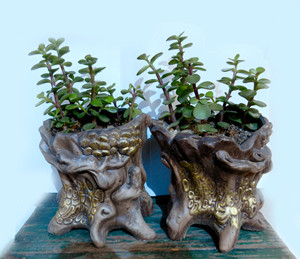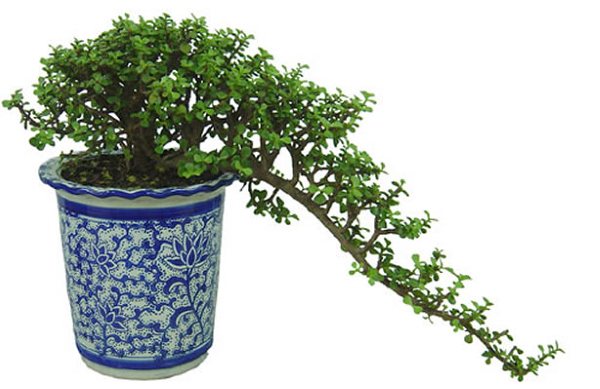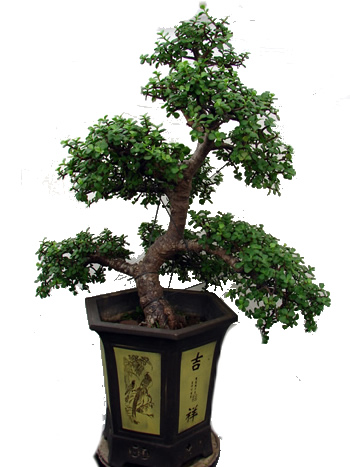How to raise Portulaca oleracea is it poisonous?
Succulent plants have been loved by people for their lovely appearance. Potted Portulaca oleracea is not only a fast-growing, cute image, but also a fleshy flower and leaf that people can't put down. Today, the editor will give you a brief introduction to how to raise purslane trees. Is it poisonous?

Brief introduction of Portulaca oleracea
Fleshy evergreen subshrubs, up to 4 m high. The stem is fleshy, the base is slightly woody, much branched, near-level growth, the new stem is reddish brown, the old stem is gray-white, and the internodes are obvious. Leaves opposite, Obovate, about 1.2 cm long and 1 cm wide, entire, bright green, fleshy. It blossoms in May and July, with small and light pink flowers.
Horse-toothed wide tree stem thick and inflated, leaves small and interesting, very much like the leaves of purslane, and very rich ancient tree charm; strong habits, easy to maintain. In addition to being used as a potted plant, it is also a good plant species for making stump bonsai. Because the florist gave it a luxurious and colorful trade name-"Golden branches and Yuye", it is more loved by people.

How to grow purslane
Temperature: Portulaca oleracea likes to be warm, and the optimum temperature for growth is 20 °C to 25 °C. Do not tolerate low temperature, the overwintering temperature should be maintained above 10 °C, low temperature will cause defoliation. Also can not bear the heat, summer high temperature when the plant is semi-dormant, should strengthen ventilation, more water spray to the environment, in order to lower the temperature. At the same time, avoid muggy and humid environment, otherwise leaves will fall due to root rot.
Lighting: purslane trees like plenty of sunlight, even in hot summer, they need to receive direct sunlight. It is best to receive more than 4 hours of direct sunlight every day. Under the condition of sufficient sunshine, the plant shape is compact, the leaves are small and thick, and the ornamental value is high. Tolerant to semi-shade, although branches and leaves grow luxuriantly under semi-shade conditions, it is easy to grow, branches and leaves are loose and uncompact, stems and nodes become longer, leaves are large and thin, resulting in unbeautiful plant shape and green twigs; the color of spotted brocade on the leaves of Portulaca oleracea will decrease, resulting in reduced ornamental. If the light in the place is not enough, you can give 12 hours of artificial light, which can also make the plant grow normally. Portulaca oleracea prefers a slightly overcast environment and needs proper shading in summer.
Watering: Portulaca oleracea has more water in the plant because of its fleshy branches and leaves, so it likes the dry soil environment. When watering, we should master "dry and wet, dry rather than wet". Too wet basin soil can easily lead to rotten roots. May-June is the period of vigorous plant growth, it should be fully shallow water to keep the basin soil moist, but to prevent the basin soil from being too wet. Check the plum rainy season in time to remove the stagnant water from the basin. Watering should be controlled when semi-dormant in summer, high temperature and humidity can easily cause rotten roots. When the weather turns cool in autumn and it is a suitable period for plant growth, sufficient water should be supplied to keep the basin soil moist and not too wet. Watering should be controlled in winter to keep the basin soil in a dry state.

Fertilization: Portulaca oleracea does not like fat. During the growth period of spring and autumn, thin nitrogen fertilizer was applied every 15 to 20 days. The species with speckled leaves should be fertilized with phosphorus and potassium fertilizer to make the leaves more beautiful. When there is more nitrogen fertilizer, the green part of the leaves of Portulaca oleracea will increase, resulting in a decrease in ornamental value.
Pruning: Portulaca oleracea has faster growth, more branches, and irregular branches, so it can be pruned and shaped at any time in the process of growth to maintain a beautiful plant shape.
Turn the basin: Portulaca oleracea turns the pot once every spring. For sandy loam with good drainage, the matrix can be prepared with rotten leaf soil, peat soil, coarse sand or rice chaff ash and other materials.
Disease and pest control: purslane has anthracnose, whitefly and shell insects and other diseases and insect pests.
Is purslane poisonous?
Friends who like to raise purslane bonsai will worry about the question of "is purslane poisonous?" according to data, purslane is a plant for both medicine and food and is not poisonous. And the whole grass for medicinal purposes, with heat and dampness, detoxification and detumescence, anti-inflammation, thirst, diuretic effect; seeds have the effect of eyesight. Purslane, also known as ginkgo, lobular glass Cui, Portulaca, Portulaca perennial succulent shrubs. Family farming is mainly foliage, and can be planted in hanging pots, which is a good material for making bonsai.

Propagation methods of Portulaca oleracea
(1) plug-in: usually in April and September-October. The stems with strong and full, short internodes and about 10 cm long were selected as cuttings. Dry it for a few days after cutting, and then cut it in after the cut is dry. Keep the soil slightly dry after insertion and take root after 15-20 days, it is very easy to survive.
(2) grafting: Portulaca oleracea can also be propagated by grafting. Cut the current year's Portulaca oleracea branch as a scion, the scion should not be too long, and the two sides of the scion should be obliquely cut into the shape of a duck beak; choose the old purslane as the rootstock, and cut all the lateral branches short, and the truncated branches can be used for cutting; then cut longitudinally at the top of each section of the rootstock, with a depth of 1-2 cm, and insert the scion into the slit of the rootstock; finally, tie the interface with plastic film. The subsequent plant is placed in a semi-shady shelter from the rain, do not let the water enter the grafting place when watering, and survive after 10-15 days.

All right, this is the editor's introduction to how Portulaca is poisonous about how to grow purslane. We know that the reproduction of Portulaca oleracea is very simple, and Portulaca oleracea is not only nontoxic, but also has edible and medicinal value.
Dry it for a few days after cutting, and then cut it in after the cut is dry. Keep the soil slightly dry after insertion and take root after 15-20 days, it is very easy to survive.
(2) grafting: Portulaca oleracea can also be propagated by grafting. Cut the current year's Portulaca oleracea branch as a scion, the scion should not be too long, and the two sides of the scion should be obliquely cut into the shape of a duck beak; choose the old purslane as the rootstock, and cut all the lateral branches short, and the truncated branches can be used for cutting; then cut longitudinally at the top of each section of the rootstock, with a depth of 1-2 cm, and insert the scion into the slit of the rootstock; finally, tie the interface with plastic film. The subsequent plant is placed in a semi-shady shelter from the rain, do not let the water enter the grafting place when watering, and survive after 10-15 days.

All right, this is the editor's introduction to how Portulaca is poisonous about how to grow purslane. We know that the reproduction of Portulaca oleracea is very simple, and Portulaca oleracea is not only nontoxic, but also has edible and medicinal value.
- Prev

What should be paid attention to in planting potted strawberries? a complete collection of daily nursing methods for potted strawberries
What should be paid attention to in planting potted strawberries? a complete collection of daily nursing methods for potted strawberries
- Next

Can epiphyllum be eaten?
Can epiphyllum be eaten?
Related
- Wuhan Hospital Iron Tree Blooming Result Was Instantly Frightened by the Gardener Master
- Which variety of camellia is the most fragrant and best? Which one do you like best?
- What is the small blue coat, the breeding methods and matters needing attention of the succulent plant
- Dormancy time and maintenance management of succulent plants during dormancy
- Minas succulent how to raise, Minas succulent plant pictures
- What are the varieties of winter succulent plants
- How to raise succulent plants in twelve rolls? let's take a look at some experience of breeding twelve rolls.
- Attention should be paid to water control for succulent plants during dormant period (winter and summer)
- Watering experience of twelve rolls of succulent plants
- Techniques for fertilizing succulent plants. An article will let you know how to fertilize succulent plants.

